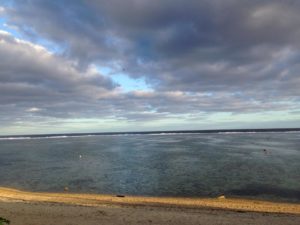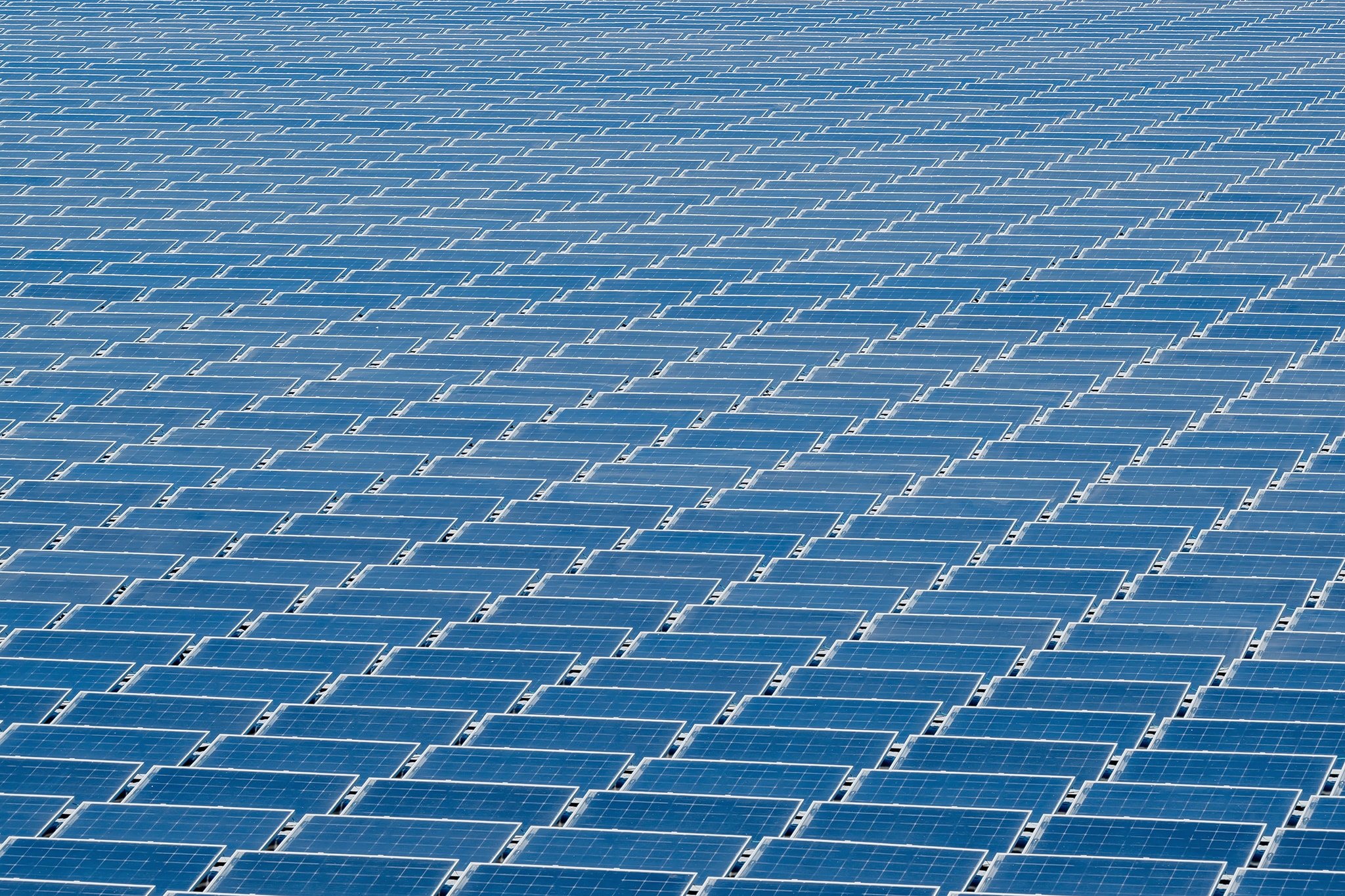2019 is on track to be the hottest year ever recorded. Heatwaves in Europe saw the mercury peak past 45℃ this summer, while major fires ravaged the United States, Russia, and Canada. In Australia droughts and severe weather events worsened. Greenland announced that its ice shelves hemorrhaged ice at the rate of several billion liters per day within the same news cycle that Guam declared it had lost over a third of its coral coverage. Globally, the climate is shifting, sea levels are rising and the environment is suffering.

With extreme temperatures and weather events dominating the headlines and activists taking to the streets, climate change has become a real talking point amongst politicians and the general public. Despite many still debating whether or not the world is facing a climate crisis, island nations across the world have long been living with the certainty that it is real. When Dr. Caroline Rufin-Soler expressed in a 2004 research paper that “it has been over a decade now that atoll nations live in the certainty that human-driven global warming will be the reason for their disappearance,” she was hardly the first to convey their plight.
Related topics: Climate Change and Its Impact on Food – Climate Change in the Arctic – How to Talk to a Climate Denier – Greenland’s Shrinking Ice Sheet
The Canaries In The Coal Mine
The impact of rising sea levels and climate change on islands has been well-researched, and islanders have long known that it would affect them. Since the 1990s, multiple studies identified low-lying atoll nations and islands as the most likely to be the first to succumb to climate change. Atolls were seen as especially vulnerable, with a 1992 Intergovernmental Panel on Climate Change (IPCC) report “reconfirming” that atolls were severely threatened by sea-level rise and increasingly severe weather events. The IPCC report recommended emissions reductions and international cooperation to find a global solution and grimly noted that natural coral growth may be the only way to save atolls from rising sea levels.
Unfortunately for atolls, increasing CO2 emissions have led to warmer, more acidic oceans which have stunted coral resilience and their ability to grow. Evident in global bleaching events, corals are struggling to survive in their new environment, leaving atoll nations defenseless to rising sea levels and severe weather events. This leads to a set of questions that international policy-makers have yet to broach: What will happen when nations no longer have their land? Who will take care of the people from atolls and island-nations sinking beneath the waves?

While some islands and atolls, such as Niue and Tahiti, find themselves tied to much larger nations (New Zealand and France, respectively) and may have recourse to ‘internal’ migration, this leaves a majority of sovereign nations alone in dealing with climate change. From seawalls to building further inland, islanders have attempted to curb the effects of their changing environment with mixed success. A lack of infrastructure and investment has left many atoll and island nations unable to defend themselves from the onslaught of rising sea levels, powerful storms and loss of biodiversity – leading many to resort to migrating to other countries.
Rising sea levels are expected to displace billions in Asia by 2100 according to a recent Cornell University study. But in the Pacific alone, experts estimate that there could be between 665,000 and 1,750,000 people who will already be displaced by 2050 – a sobering assessment when you consider that the Pacific islands contribute less than 0.03% to global carbon emissions.
Models of Resilience
One may think that, in the face of seemingly insurmountable odds, islanders have quietly resigned themselves to their fates. The truth is quite the opposite. Islands have led the charge in environmental innovation. From Aruba pioneering low-carbon technology to Tokelau’s carbon-neutral electrical grid, islands are determined to be part of any solution in sustainable development and climate change mitigation. When not innovating new technology and policies, small island states have taken to the global stage to stimulate discussions on climate change.
At the 2009 Copenhagen climate change conference, Tuvalu, with the support of other island nations, demanded a binding environmental agreement that ensured all nations cut carbon emissions in a bid to limit any temperature rise to 1.5℃. Dessima Williams, a Grenadian diplomat explained: “We have two research stations, one in the Pacific and one in the Caribbean. They both suggest a rise of 2℃ is completely untenable for us. Our islands are disappearing, our coral reefs are bleaching, we are losing our fish supplies. We bring empirical evidence to Copenhagen of what climate change is doing now to our states.”

Their proposal was dismissed but helped build the framework for the Paris Agreement that would be signed seven years later. The Agreement aims to limit temperature rise to a maximum of 2℃, with signatory nations committing to reduce their carbon emissions and seek opportunities to reduce the damages caused by the changing climate. A landmark accord with global ramifications, islands stand to gain the most from concerted, worldwide action, and they have been vocal about other nations falling behind on their commitments – making Donald Trump’s decision to withdraw the United States from the Agreement a painful development.
Emele Duituturaga, the head of the Pacific Islands Association of Non-Governmental Organisations, described their frustration: “Many of the situations we find ourselves in, here in the Pacific, are not caused by us. We continue to ask, ‘Where is the justice?’ Those of us who are least responsible continue to bear the brunt. We hope that there will be an openness and an acceptance that climate-induced migration is one that the world community has to be responsible for.”
Editor’s Picks – Related Articles:
 “Hungry for Data, Starving the World”
“Hungry for Data, Starving the World”
 “Large-Scale Lithium Batteries Are The Future Of The Energy Grid”
“Large-Scale Lithium Batteries Are The Future Of The Energy Grid”
In the Caribbean, the US’ lack of accountability in helping prevent climate change hasn’t gone unnoticed, with pundits urging governments and companies to not operate “business as usual” in the face of environmental deterioration. However, the United States isn’t the only nation lagging.
This year saw the Fiji Islands’ Prime Minister Frank Bainimarama call out his Australian counterpart for a “lack of ambition, commitment” in taking on climate change – the second concurrent year that Fiji has criticized their Pacific neighbor for their continued inaction. Australia’s poor environmental record has left other nations the responsibility to step up in leading the Pacific’s fight towards securing a better future for its inhabitants.
While there has been a marked improvement in the world’s response to climate change, islands continue to be the ones leading the fight.

Uncertain Future
Scientists believe atolls may be uninhabitable by 2050, and the rate at which sea levels will rise has been a point of contention. The IPCC’s prediction of a 90cm rise by 2100 in global sea level has been described as “optimistic”, with scientists putting forward “plausible” models that predict an increase between 2m – 3m within the same time frame.
Climate change has had such an effect on the global environment that modelers are no longer confident in their predictions, as they’ve often proven to be too optimistic.
Islands have always been models of resilience and have always sought to find solutions to the challenges ahead of them. However, climate change and rising sea levels have proven to be dangerous adversaries that require a global solution. While climate change may have taken some time to make itself known worldwide, the effects have been affecting islands for decades. It’s time we recognize that and work together to find a solution that benefits everyone.
EDITOR’S NOTE: The opinions expressed here by Impakter.com columnists are their own, not those of Impakter.com.














